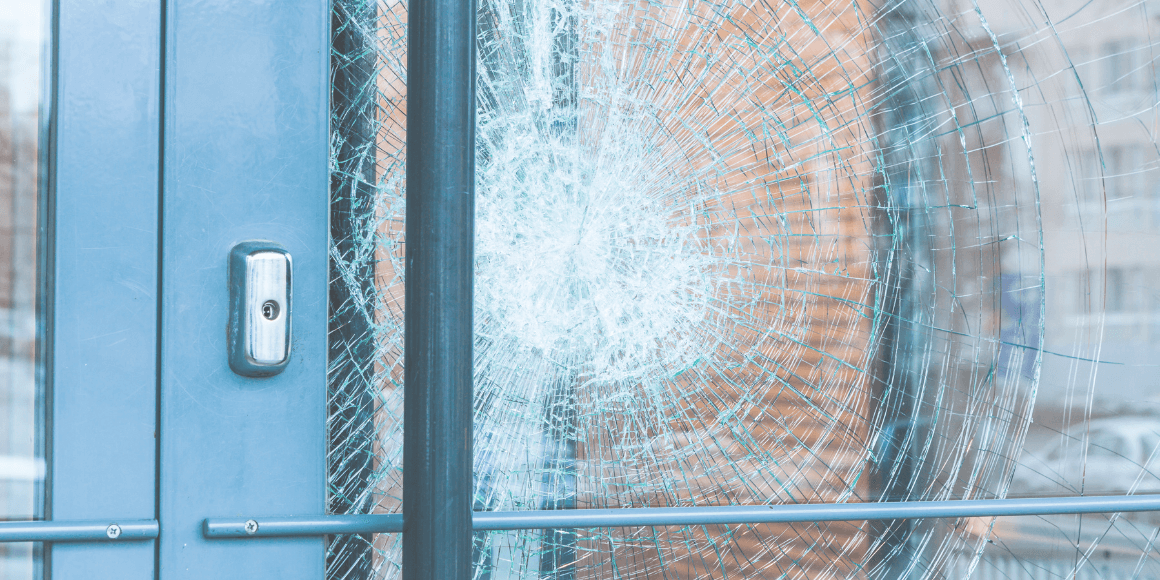
Securing educational institutions against potential threats has never been more crucial. However, amidst ongoing efforts, windows in campus buildings still stand as an often-overlooked vulnerability. While integral for providing natural light and ventilation, windows also pose significant security risks.
Our 2024 Glass Security and Safety Report brings this issue into focus, presenting alarming data on the vulnerability of window glass to breaches and intrusions. This article delves into the essential findings of the report, proposing innovative approaches to enhance window glass security and elevate campus-wide safety measures.
The State of Campus Security
A stark statistic of 6 out of 10 of the deadliest school shootings occurred because perpetrators were able to breach buildings through windows. Notable incidents like those at Red Lake High School in 2005, Sandy Hook Elementary School in 2012, and Marjory Stoneman Douglas High School in 2018 starkly illustrate the vulnerability of traditional window glass to forced entry.
Current Vulnerabilities in Campus Security Systems
Glass doors and windows, while aesthetically pleasing, are a weak point in building security. Addressing their vulnerabilities is crucial to ensuring comprehensive campus safety:
- Easy access: Glass can be shattered easily, allowing intruders to gain quick entry into buildings which can lead to theft, violence, or worse.
- Clear visibility: Transparent windows make it easy for intruders to identify and target individuals inside of school buildings.
- Hazardous conditions: Compromised glass can create hazardous “spall” that hinders evacuation efforts and endangers occupants during emergency situations.
Key Findings from the 2024 Glass Security and Safety Report
With these vulnerabilities in mind, let’s dive into the key findings from our 2024 Glass Security and Safety Report. By addressing these aspects comprehensively, organizations can better understand the critical role of doors in building security, learn about the effectiveness of various glazing security solutions, and dispel myths surrounding safety and security films.
- Glass vulnerability in security incidents: A significant majority (51 percent) of respondents identified glass doors and windows as the most vulnerable points during unauthorized intrusions. This highlights the critical need for enhanced security measures to protect against break-ins.
- Improvements in door and lock security: Over the past few years, there has been a notable improvement in perceptions regarding door and lock security. Currently, 25 percent of respondents believe doors and locks are most likely to fail during intruder events, down from 36 percent two years ago.
- Confidence in perimeter security: Security professionals in the K12 sector exhibit varying levels of confidence in perimeter security measures. Approximately 74 percent of professionals at single K12 campuses express confidence, while 64 percent of respondents from school districts with multiple campuses share similar sentiments.
- Concerns about response times: A significant concern persists among 57 percent of survey participants regarding the ability of first responders to arrive promptly enough to prevent intruders from gaining access. This underscores ongoing challenges in emergency response readiness.
- Increase in on-site security personnel: The deployment of on-site security personnel has seen a notable increase, with 65 percent of survey participants reporting the presence of security personnel in some or all of their buildings. This marks an eight percentage point rise from two years ago, reflecting proactive efforts to bolster security measures.
Safety and Security Film Myths
Dispelling myths surrounding safety and security films is crucial for informed decision-making. One common—and inherently dangerous—misconception involves their bullet resistance. While security films can mitigate the vulnerabilities of glass, they are not bulletproof and are designed to delay rather than completely prevent penetration in the case of ballistic threats.
Additionally, several factors influence the effectiveness of security films against intrusion attempts. These include the thickness of the film, the quality of installation, and the condition of the underlying glass.
Optimal performance requires careful consideration of these factors to ensure that security films provide the intended level of protection against forced entry and other security threats.
Solutions for Campus Safety and Security
To address these risks effectively, the installation of security films stands out as a practical solution. These transparent layers, applied directly onto existing window glass, are typically made of polyester or other durable materials that effectively hold shattered glass together upon impact. Doing so offers resilience against forced entry and minimizes the risk of injuries caused by flying glass shards during emergencies.
For a more advanced approach, consider the 3M S2400 film. Utilizing cutting-edge polyurethane technology, 3M S2400 stretches up to 610% at break strength without tearing, providing exceptional resistance to breaches while ensuring crystal-clear visibility. Learn how 3M S2400 can enhance your campus security by watching our detailed video:
NGS offers a variety of security films specifically designed to reinforce campus windows. These films not only bolster security but also offer reassurance to educational institutions committed to fostering safer environments for their communities. Our films can be retrofitted onto existing windows without the need to replace the entire pane, making them a cost-effective choice to deter potential intruders.
Participate in our “Defend Your Glass” webinar to learn more about enhancing campus security.
Taking Proactive Measures with Security Films
The 2024 Glass Security and Safety Report serves as a wake-up call to the vulnerabilities posed by traditional window glass in educational settings. By embracing solutions like security films, campuses can significantly bolster their security posture against potential threats. It is imperative for educational leaders and security professionals to take proactive steps in fortifying their facilities to ensure the safety of everyone within.
Download the 2024 Glass Security and Safety Report here to delve deeper into these insights and recommendations.



